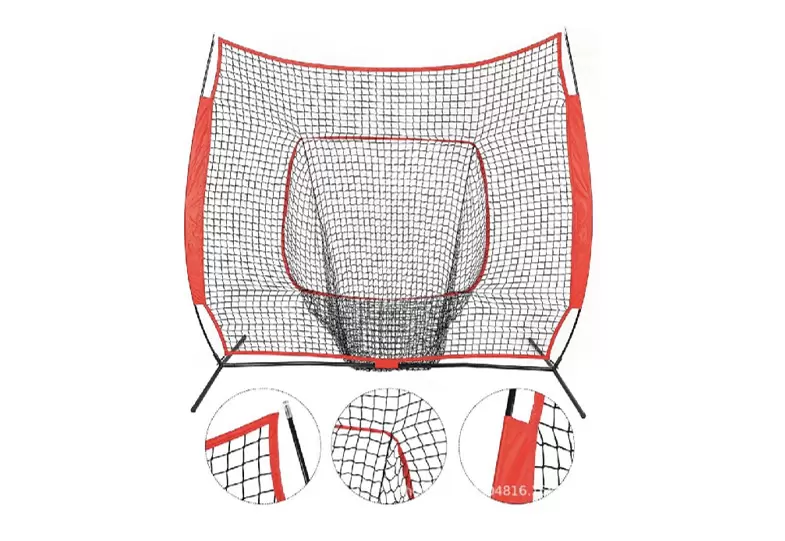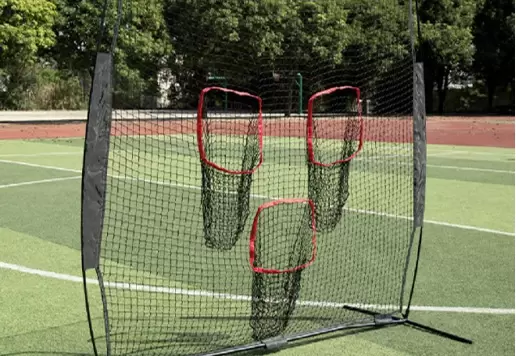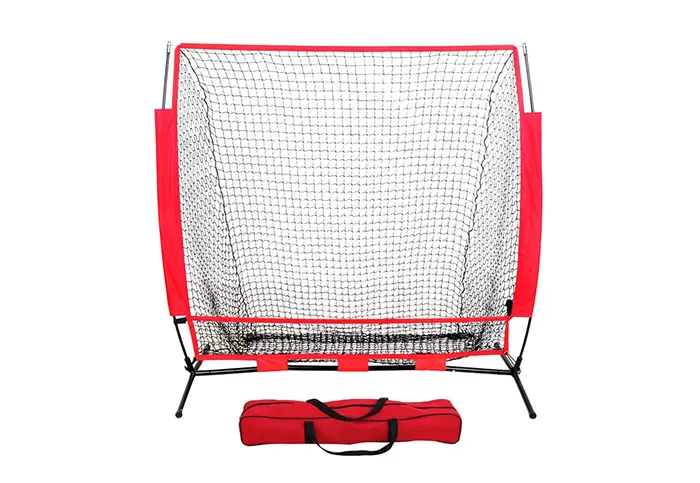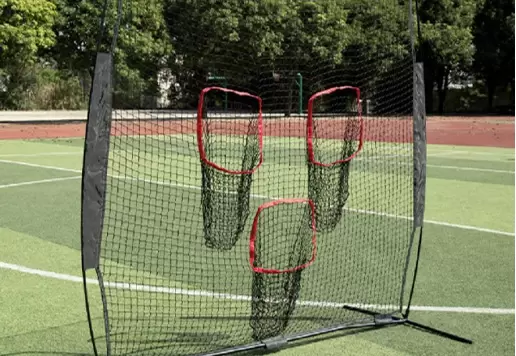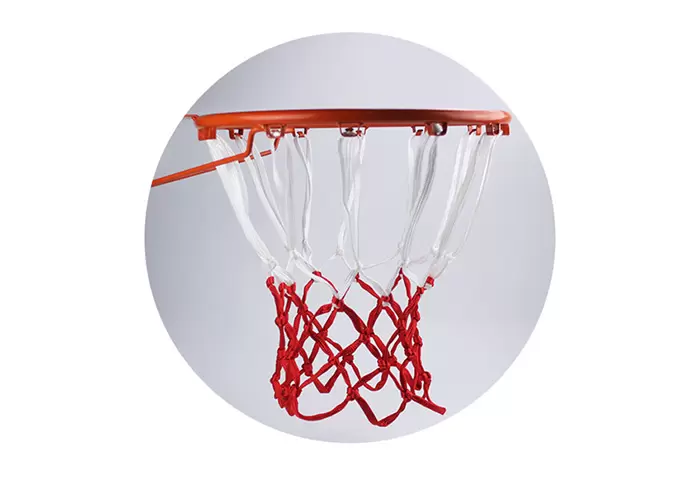Selecting the right batting cage net is crucial for both professional training facilities and amateur baseball enthusiasts. The choice between single-layer and double-layer protection nets can significantly affect durability, safety, and long-term costs. Riches Net, with over 23 years of industry experience, specializes in producing high-quality sports nets using tight knots, precise dimensions, and long-lasting materials, ensuring every installation meets rigorous standards.
This guide provides a detailed, practical comparison of single vs double-layer batting cage nets, helping facility managers, coaches, and equipment purchasers make informed decisions.
Key Differences Between Single and Double Layer Nets
Single-Layer Nets are typically made of a single mesh layer, offering basic protection. They are lightweight, cost-effective, and suitable for lower-intensity training.
Double-Layer Nets feature two layers of high-strength mesh, providing extra protection against ball penetration, reducing rebound impact, and extending the net’s service life. The inner layer absorbs energy, while the outer layer maintains structural integrity.
| Feature | Single-Layer Net | Double-Layer Net |
|---|
| Protection Level | Basic | High, can handle professional-grade hits |
| Durability | Moderate, prone to faster wear | Enhanced, longer lifespan |
| Ball Containment | Limited, higher chance of escape | Excellent, minimal ball escape |
| Cost | Lower | Higher upfront cost |
| Installation Complexity | Simple | Slightly more complex, but manageable |
| Recommended Usage | Recreational, youth training | Professional training, high-velocity practice |
Safety Considerations
Safety is paramount in any batting cage setup. Double-layer nets provide superior safety for both players and surrounding areas:
Impact Absorption: The dual layers reduce the force of high-speed balls, preventing rebounds that could injure players or staff.
Protective Barrier: Ideal for cages placed near walls or spectator areas, mitigating risk from stray balls.
Enhanced Longevity: By reducing mesh strain, double-layer nets lower the likelihood of sudden tears, maintaining consistent safety performance.
For facilities training advanced athletes or pitchers, double-layer protection ensures consistent, safe operation even with repeated high-velocity impacts.
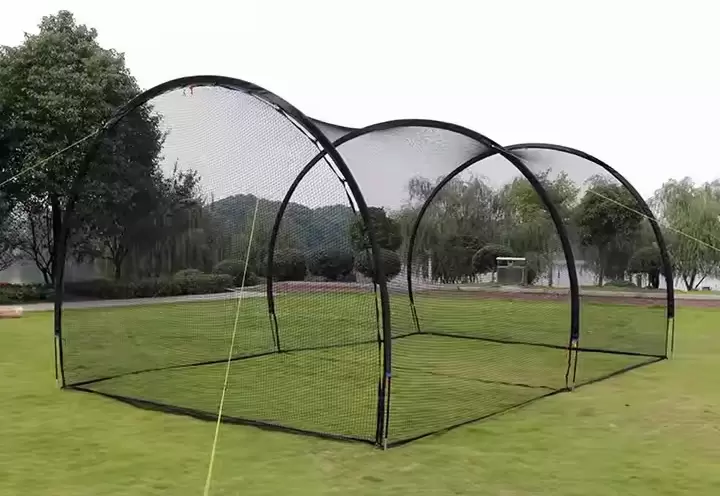
Material Quality and Durability
Riches Net focuses on high-quality polyethylene (PE) or nylon yarns, tightly knotted for maximum strength and minimal deformation:
UV and Weather Resistance: Both single and double-layer nets can withstand outdoor conditions, but double-layer nets last longer under continuous exposure.
Tensile Strength: Double-layer nets handle larger loads from repeated ball strikes without compromising structure.
Abrasion Resistance: Inner layers of double-layer nets prevent direct friction damage to the outer mesh, extending overall net lifespan.
High-quality materials combined with precise manufacturing ensure that double-layer nets pay off over time despite higher initial investment.
Installation and Maintenance
While both net types can be installed on standard frame systems, there are practical differences:
Single-Layer Nets: Lighter weight simplifies mounting and replacement. Ideal for temporary setups or small cages.
Double-Layer Nets: Slightly heavier but manageable; often secured with additional clips or tensioning systems to prevent sagging.
Maintenance: Double-layer nets require periodic checks of both layers, especially at high-stress points, to maximize lifespan.
Custom Sizes: Riches Net produces nets in custom dimensions, ensuring seamless fit for cages of varying lengths and heights.
Proper installation minimizes sagging and ensures consistent impact absorption, crucial for training effectiveness.
Cost-Benefit Analysis
Choosing between single and double-layer nets involves balancing initial cost against long-term value:
Single-Layer Net: Lower upfront investment, suitable for light recreational use, but prone to more frequent replacements.
Double-Layer Net: Higher initial cost but significantly reduces replacement frequency and maintenance. Facilities with high daily usage often recover investment within 2-3 years due to reduced downtime and repair costs.
For professional academies or commercial facilities, double-layer nets represent the smarter long-term choice.
Performance for Different User Groups
| User Group | Recommended Net Type | Rationale |
|---|
| Youth and Beginners | Single-Layer | Lightweight, cost-effective, sufficient for low-speed hits |
| Amateur Leagues | Double-Layer (optional) | Offers extra safety, especially for indoor cages |
| Professional Athletes | Double-Layer | Handles high-speed pitches, protects surrounding areas |
| Indoor Commercial Facilities | Double-Layer | Reduces rebound damage, withstands constant daily use |
Selecting the appropriate net type based on user profile ensures optimal performance, safety, and ROI.
Frequently Asked Questions (FAQ)
Q1: Can a single-layer net be upgraded to double-layer later?
A1: Yes. Double-layer nets can often be added as a retrofit, though pre-planned double-layer installations ensure better tensioning and impact absorption.
Q2: How long does a double-layer batting cage net last?
A2: With high-quality PE or nylon materials and proper maintenance, double-layer nets can last 8–12 years in outdoor facilities, and even longer indoors.
Q3: Are double-layer nets significantly heavier?
A3: Slightly, but the weight increase is manageable with standard frame systems. Proper installation ensures minimal sagging.
Q4: Do double-layer nets reduce ball rebound?
A4: Yes, the inner layer absorbs impact, significantly lowering ball rebound velocity and enhancing player safety.
Q5: What customization options are available?
A5: Riches Net offers custom dimensions, mesh density, color options, and reinforcement levels tailored to facility needs.
Conclusion
Choosing between single and double-layer batting cage nets depends on training intensity, player level, safety requirements, and long-term cost considerations. While single-layer nets are suitable for casual or youth training, double-layer nets provide enhanced protection, durability, and ROI for professional and high-frequency training facilities.
With over 23 years of industry experience, Riches Net produces high-quality, tightly knotted, and dimensionally precise nets, providing both recreational and professional facilities with reliable, long-lasting solutions. By evaluating usage, safety, and longevity needs, facility managers can select the ideal batting cage net type for their specific requirements.



